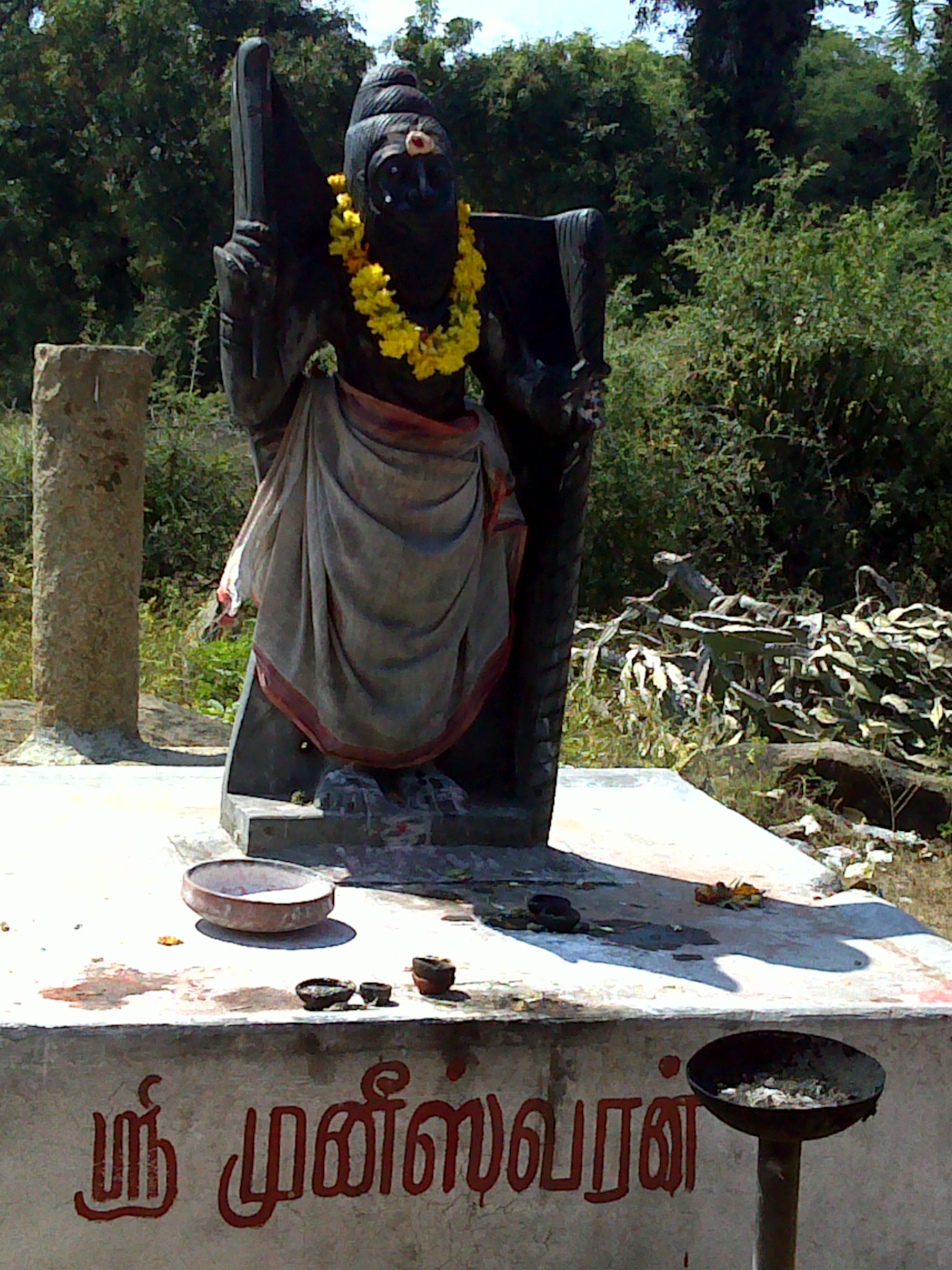Muniandi on:
[Wikipedia]
[Google]
[Amazon]
 Muniandi, also referred to as Munisvaran, is a
Muniandi, also referred to as Munisvaran, is a
Tamil
Tamil may refer to:
* Tamils, an ethnic group native to India and some other parts of Asia
**Sri Lankan Tamils, Tamil people native to Sri Lanka also called ilankai tamils
**Tamil Malaysians, Tamil people native to Malaysia
* Tamil language, nativ ...
rural guardian deity of plantations and estates. He is primarily worshipped by South of Tamilnadu by Tamil society. He is regarded as a powerful god who protects from diseases and crop failures. He is also recognised as a divine attendant to a major South Indian rural deity, Mariamman
Mariamman, often abbreviated to Amman, is a Hindu goddess of rain, predominantly venerated in the rural areas of South India. Her festivals are held during the late summer/early autumn season of Ādi throughout Tamil Nadu and the Deccan region, ...
.
Etymology
The word Muniandi is a combination of two words, Muni and Andi. The word Andi could be defined in two ways. One referring to ''slave of God'' and the other ''ruling (as in ruler). ''The second explanation could be derived from the word Andavar, which literally means ''he who rules''. The reason for this explanation is the word Andi being used for other deities in the Tamil pantheon.Literature
They are actually a Shiva Ganas they are associated withShiva
Shiva (; sa, शिव, lit=The Auspicious One, Śiva ), also known as Mahadeva (; ɐɦaːd̪eːʋɐ, or Hara, is one of the principal deities of Hinduism. He is the Supreme Being in Shaivism, one of the major traditions within Hindu ...
and it is believed that they actually they came from Shiva's face in 7 forms and then they promise Shiva that they'll protect the holy spirits because of this they guards Mariamman
Mariamman, often abbreviated to Amman, is a Hindu goddess of rain, predominantly venerated in the rural areas of South India. Her festivals are held during the late summer/early autumn season of Ādi throughout Tamil Nadu and the Deccan region, ...
and other Dravidian goddesses.
Worship
Tree Worship (Maram Vallipadu)
*The trees as such asBanyan
A banyan, also spelled "banian", is a fig that develops accessory trunks from adventitious prop roots, allowing the tree to spread outwards indefinitely. This distinguishes banyans from other trees with a strangler habit that begin life as a ...
(Ala Maram), Peepal
''Ficus religiosa'' or sacred fig is a species of fig native to the Indian subcontinent and Indochina that belongs to Moraceae, the fig or mulberry family. It is also known as the bodhi tree, pippala tree, peepul tree, peepal tree, pipal tree, ...
(Arasa Maram) and Palmyra
Palmyra (; Palmyrene: () ''Tadmor''; ar, تَدْمُر ''Tadmur'') is an ancient city in present-day Homs Governorate, Syria. Archaeological finds date back to the Neolithic period, and documents first mention the city in the early second ...
(Pana Maram) are believed to be the gateways used by the Munis to travel between different dimensions. The Munis are also believed to reside in such trees. Tree Worship is the oldest form of Muni worship.
Stone Worship (Nadukkal Vallipadu)
*The Stone Worship was mentioned even during Tamil Sangam ages more than 2,500 years ago. Nadukkal or Veerarkal (for warriors) were planted to commemorate the death of someone important. In the Muni worship, it can be divided to either a single stone or three stones (or bricks), decorated withSaivite
Shaivism (; sa, शैवसम्प्रदायः, Śaivasampradāyaḥ) is one of the major Hindu traditions, which worships Shiva as the Supreme Being. One of the largest Hindu denominations, it incorporates many sub-traditions rangi ...
sacred ash (vibuthi) marks, sandal paste (santhanam) and saffron
Saffron () is a spice derived from the flower of ''Crocus sativus'', commonly known as the "saffron crocus". The vivid crimson stigma and styles, called threads, are collected and dried for use mainly as a seasoning and colouring agent i ...
paste (kungkumam). A trident
A trident is a three- pronged spear. It is used for spear fishing and historically as a polearm.
The trident is the weapon of Poseidon, or Neptune, the God of the Sea in classical mythology. The trident may occasionally be held by other marine ...
(soolam) is planted as a mark of Sivan and Shakti.
Statue worship (Uruvam Vallipadu)
*This is the most contemporary form of worship. Statues are erected and decorated to help the devotee visualise on the Muni. Other insignias such assickle
A sickle, bagging hook, reaping-hook or grasshook is a single-handed agricultural tool designed with variously curved blades and typically used for harvesting, or reaping, grain crops or cutting succulent forage chiefly for feeding livestock, ei ...
(aruval), sword and mace will be used depending on the type of Muni.
Worship outside India
The deity is also popular amongst theTamil diaspora
The Tamil diaspora refers to descendants of the Tamil people, Tamil Emigration, immigrants who emigrated from their native lands (Tamil Nadu, Puducherry (union territory), Puducherry and Sri Lanka) to other parts of the world. They are found pri ...
outside Tamil Nadu. In Malaysia, Muniandi worship was started by Tamil migrants who had the Munis as their Kula Deivam. The family temples which were built in the estates and villages later turned into public temples. Eventually, more people started worshipping these Munis and it became popularised.
References
* *Muneeswaran Poojai - Pon.Moorthy *Muniswaran Vallipaadu - Murugan Poosari {{HinduMythology Tamil deities Regional Hindu gods Hindu folk deities